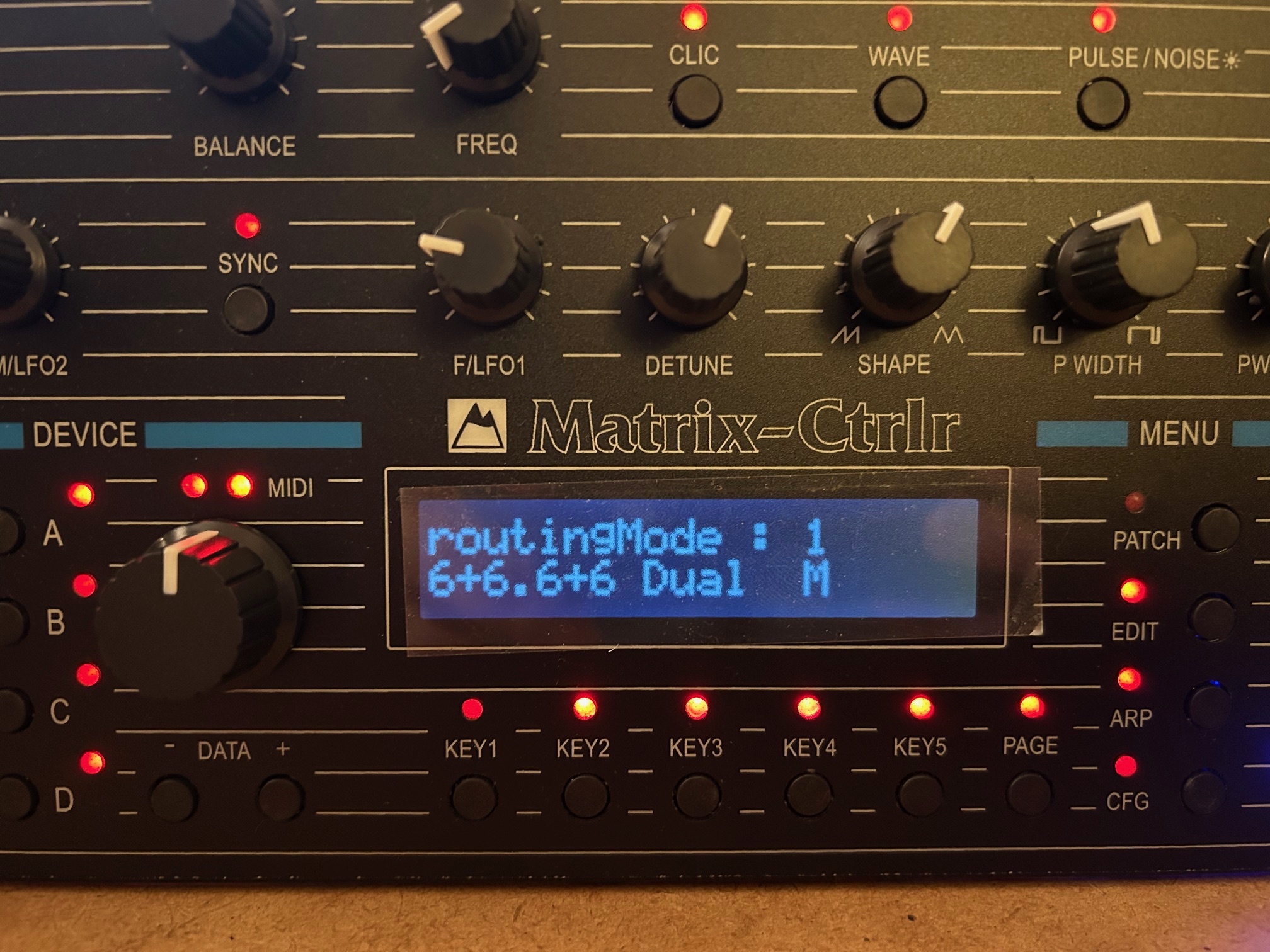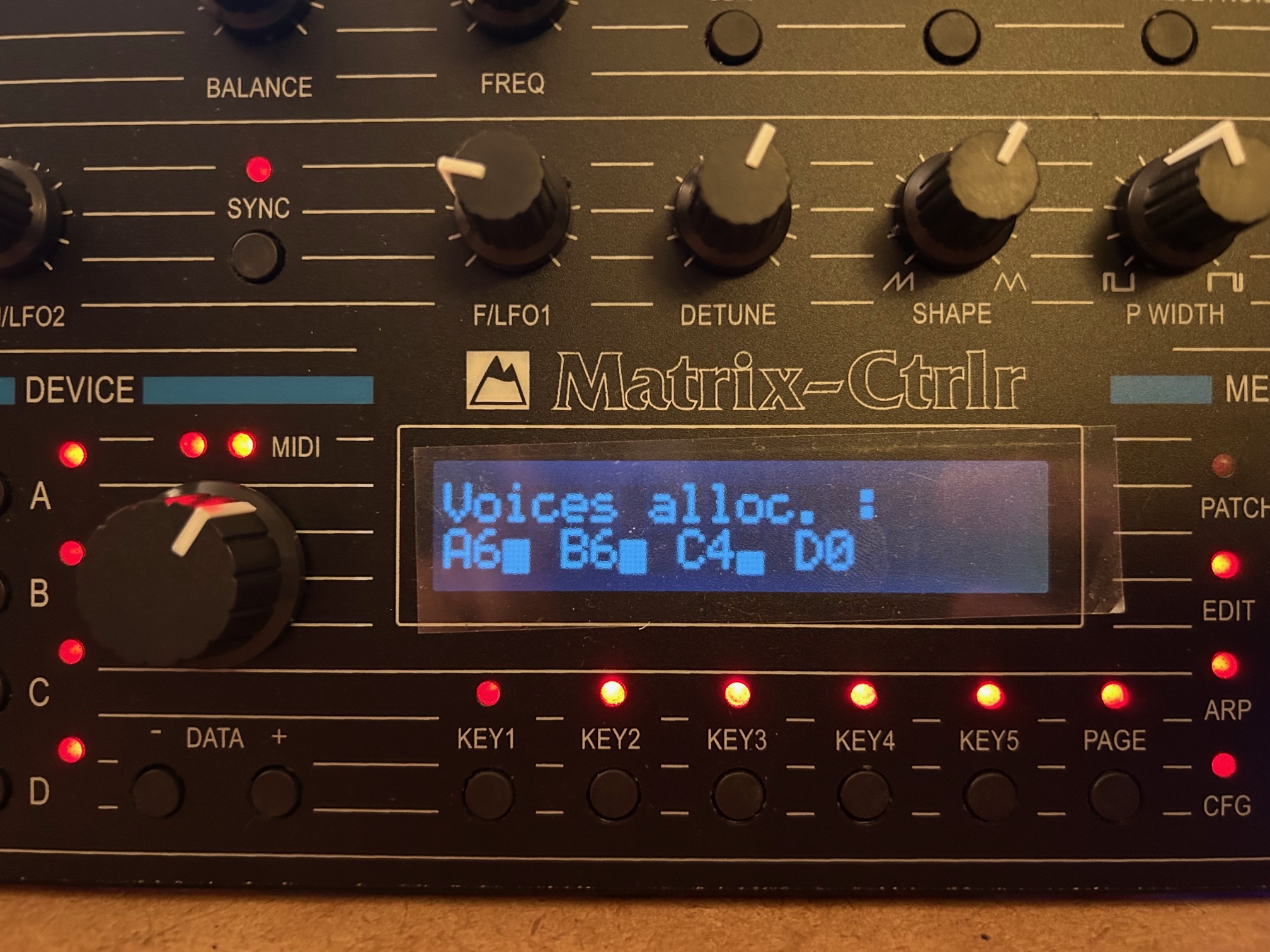
The Matrix Ctrlr is a powerful instrument able to play sequenced notes. It has a 7-notes Arpeggiator engine and a 32 steps Sequencer engine that you can setup in ARP Menu.
An arpeggio is an arrangement of notes composing a chord, each pitch being unique. Notes are ordered from the lowest to the highest and this chord can be played following different patterns defined by the musician. In order to have a more expressive behavior, each pitch has a velocity associated in the Matrix Ctrlr Arpeggiator Engine.
A sequence is a serie of notes arranged in time order of appearance consisting in a serie of pitches and associated velocities. A single pitch can be repeated several times in the sequence, at various times and velocities ; this differentiates the sequence from the arpeggio.
Navigate the 4 different pages using PAGE :
- Arpeggio setup page
- Sequence page
- Misc page
- Arp/Seq Config page
The ARP Menu is used to edit the different parameters of the Sequencer and Arpeggiator associated to a patch. Both functions work on the MIDI Out A ONLY. The parameters are saved with a patch when pressing SAV in PATCH Menu.
Your keyboard is split into 2 parts around a split note, one reserved to play the arpeggio, the other destinated to enter and control the notes of the sequence à la SH101. Both are responsive to the same Midi notes channel.
Arpeggio and Sequence are velocity sensitive. Note are played/recorded with the velocity associated to the different pitches. When played back, a very complex algorithm makes a average between the new velocity played and the recorded velocities, keeping the velocity gaps between the notes of the sequence.
Arpeggio Setup Page (page 1)
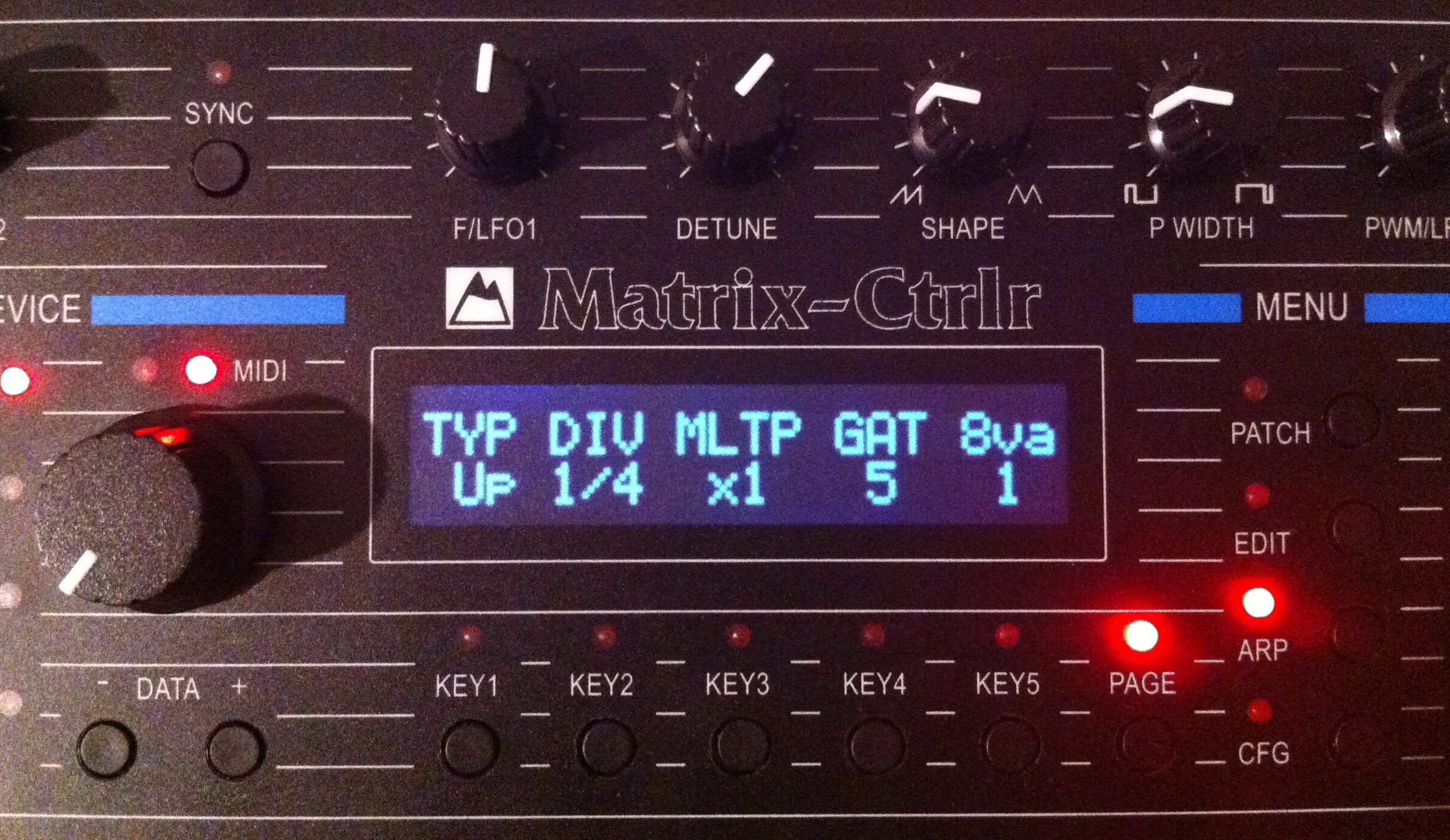 Arpeggio parameters : press associated KEY below and turn encoder to edit
Arpeggio parameters : press associated KEY below and turn encoder to edit
- TYP : the arpeggio pattern
- ORDR : play note in order of appearance
- UP : play note from lowest to highest pitch
- DOWN : play notes from highest to lowest pitch
- BNCE : bouncing notes from lowest to highest. Notes on sides are not repeated
- UpDn : UP pattern followed by DOWN pattern. Notes on sides are thus played twice
- RAND : play random notes between the ones entered
- DIV : time division of the arp based on a 24 ppqn division. Examples :
- 1/4 : 4 notes per quarter note, i.e 16 notes per 4/4 measure
- 1/2 : 2 notes per quarter note i.e 8 notes per 4/4 measure
- 2/1 : 1 note every 2 quarter note i.e 2 notes per 4/4 measure
- 1/3 : a triplet
- MLTP : multiplicate. indicate how many time you replicate a single note of the arpeggio. Example :
- G-B-D (GMaj chord) with MLTP x2 is played G G B B D D in a UP pattern
- MLTP x1 play a single note while MLTP x4 repeats 4 times the same note
- GAT : gate time of each note.
- Vary from 1 (very short time, 1/24 of a ppqn) to DIV-1.
- 8va : Octavate, goes from 0 to 3, 3 repeating the arp pattern on 3 octaves higher referencing default pitch note of the chord.
The arpeggio is immediately triggered when you press at least one key of your keyboard in the Arp area (defined in page4).
Sequence Page (page 2)
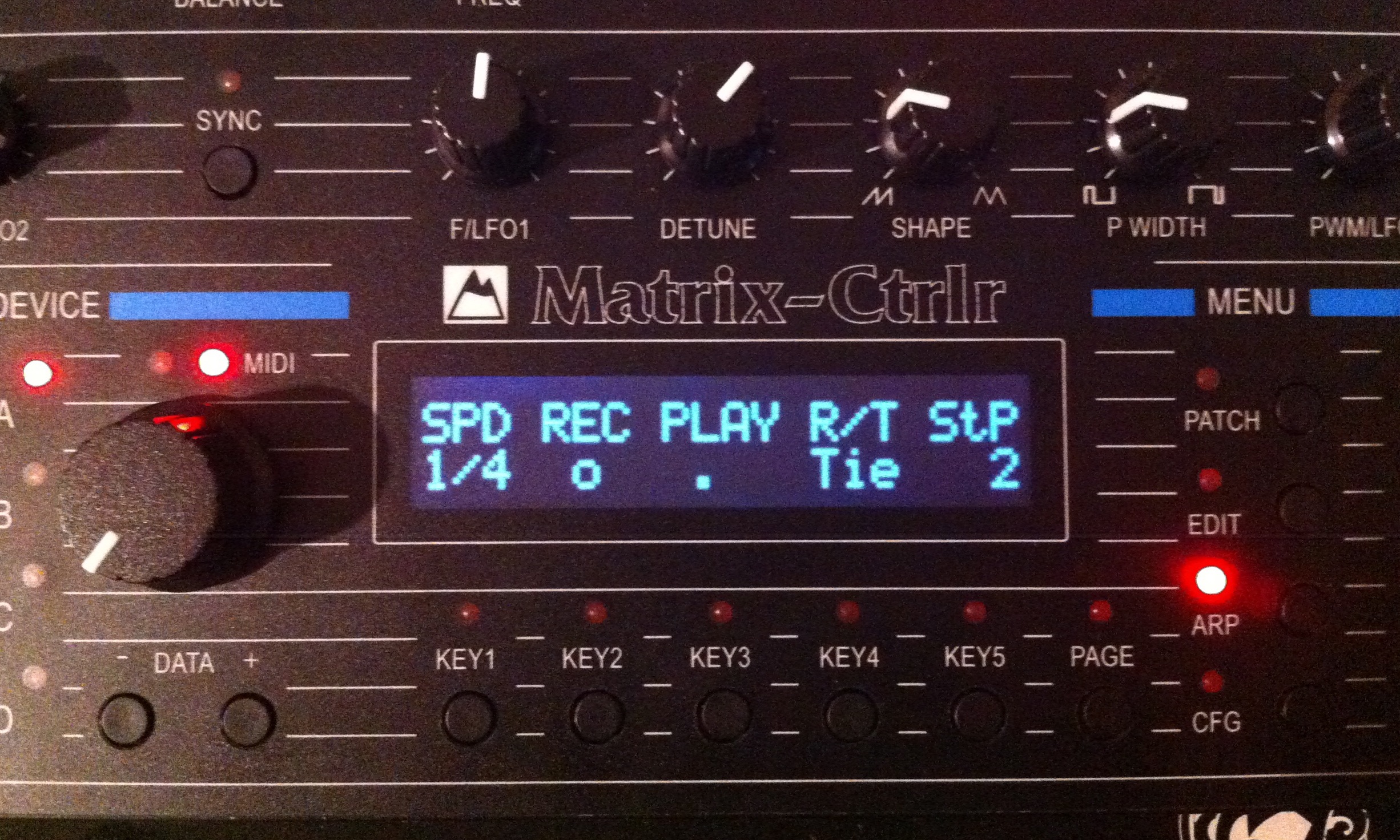
Setup the time division and notes of the sequence :
- SPD : speed of the sequence, referencing to 24 ppqn. The gate time or note duration is exactly the half of SPD. Press KEY1 and turn the encoder to edit it.
- REC : press KEY2 to record a sequence played on your keyboard.
- PLAY : press KEY3 to play/stop the recorded or previously stored sequence. F2 acts the same in PATCH or ARP menus.
- R/T : press KEY4 to insert a rest (silent note) or SHIFT + KEY4 to insert a tie (continued note) in the sequence.
- STP : indicate the step of the sequence. A sequence can have a maximum of 32 steps.
The sequence is triggered by the press of a key in the Sequencer area of your keyboard (defined in page4) while in Play mode. In Rec mode you can listen entered pitches. You can lock the key press by using SHIFT+F2. To release the sequence, press SHIFT+F2 again (unlock) and press the same key.
HINT : navigate between the steps with +/- DATA KEYS while in Rec or Play mode.
MISC Page (page 3)
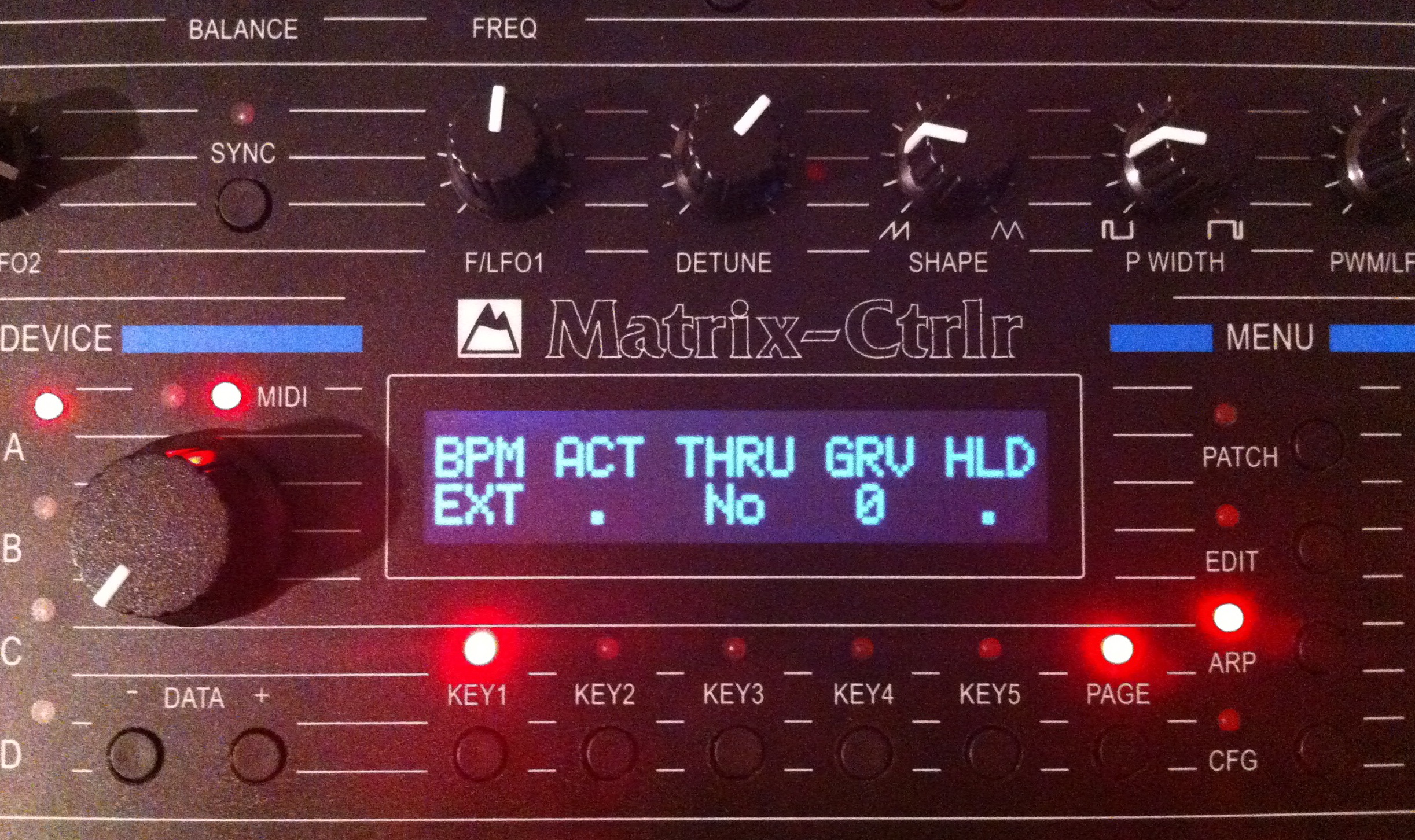
Various parameters commons to Arp and Seq :
- BPM : press KEY1 to set tempo to internal (e.g 118) or external midi clock (Mid) or sync24 pulses (s24) through Jack J1, or trigger pulse (Trg) through jack J2 or external midi note trigger (mTg). More explanations here. Turn the encoder to setup the tempo while in internal mode.
- ACT : press KEY2 to activate or not the arpeggiator engine. F1 acts the same in ARP or PATCH menu.
- THRU : press KEY3 to echo the notes played by the arpeggiator & sequencer on MIDI Core Out (useful to record the arpeggio in your DAW). Beware to midi messages loops with your system !
- GRV : press KEY4 and turn the encoder to define the groove (or swing) of the arpeggio.
- HLD : press KEY5 to hold the notes played in chord of the arpeggio (max 7 notes). Shortcut is SHIFT+F1 in ARP et PATCH Menus whatever page you are in.
Arp/Seq Config Page (page 4)
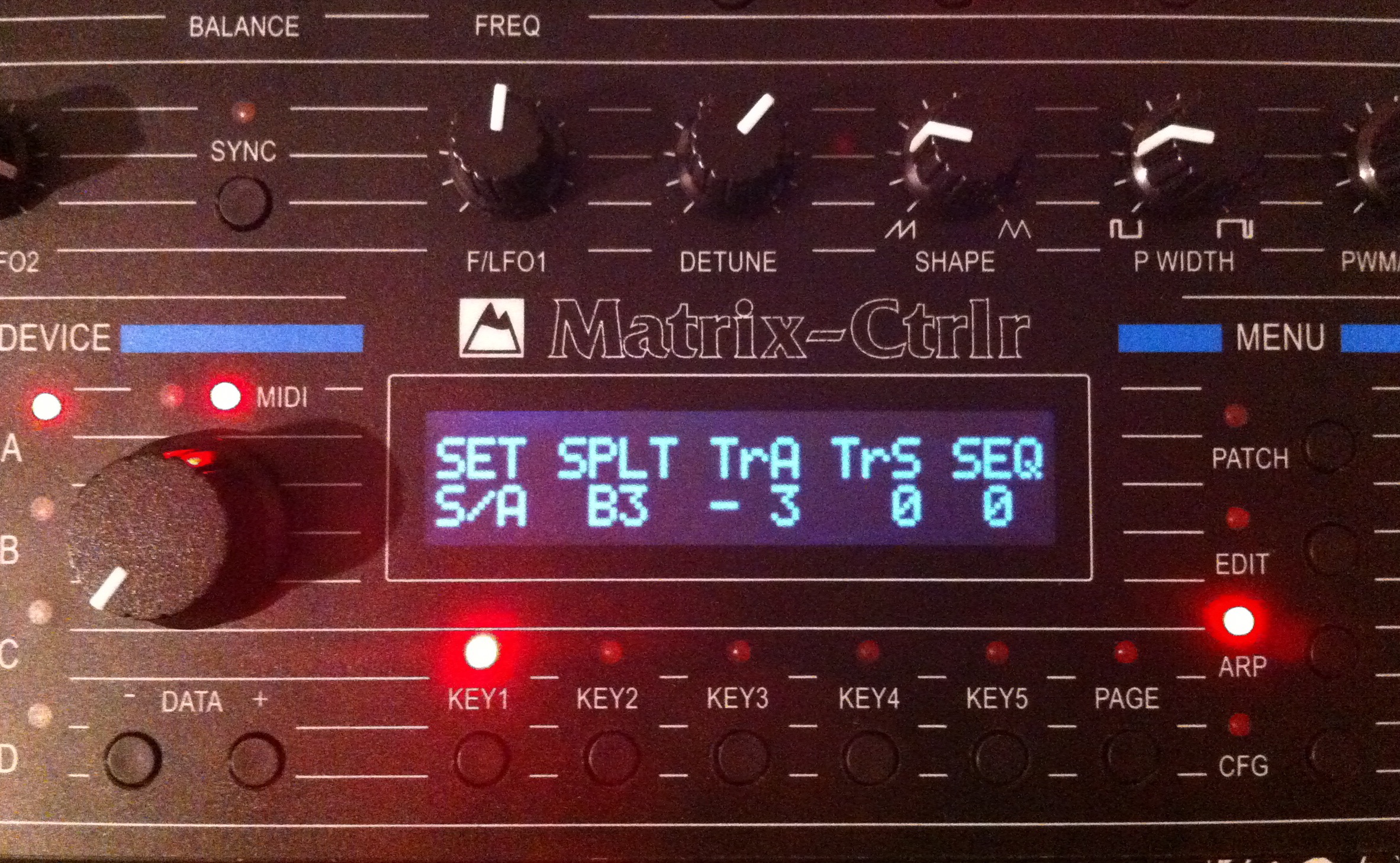
Route the midi notes messages destinated to Arp or Seq engines in function of their pitch :
- SET : press KEY1 to define if SEQ section is on left and ARP on right of the keyboard, or vice-versa.
- SPLT : press KEY2 and turn the encoder to define the pitch split note separating the ARP and SEQ section of your keyboard.
- TrA : press KEY3 and turn encoder to specify the transposition of the Arpeggio relative to played pitches. Work in real time.
- TrS : press KEY4 and turn encoder to specify the transposition of the Sequence relative to played pitches. Work in real time.
- SEQ : press KEY5, turn the encoder, press KEY5 again to set a default Sequence in the sequencer memory. Ten factory sequences are available, 0 is a dummy sequence (silent notes) and only 6 with famous riff have been coded for the moment. You are welcome to share your ideas to Alpes Machines for the remaining ones ????


